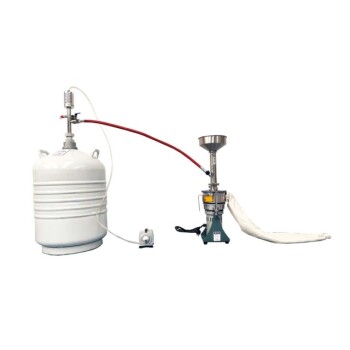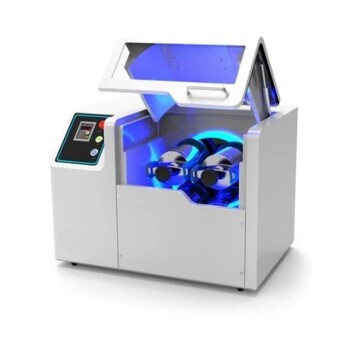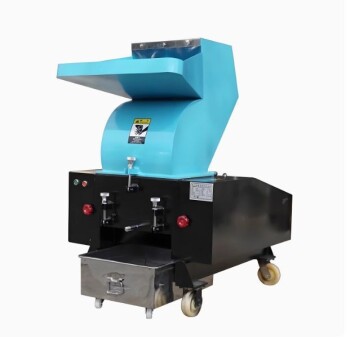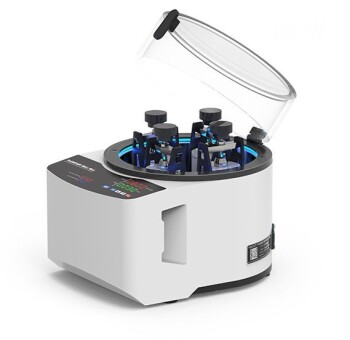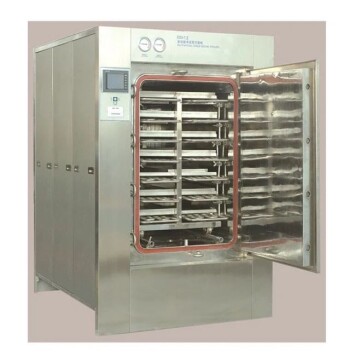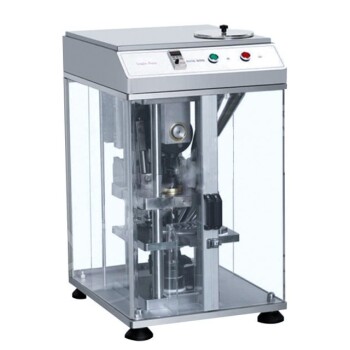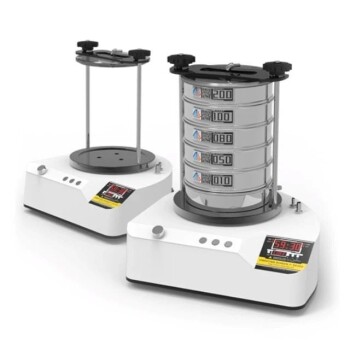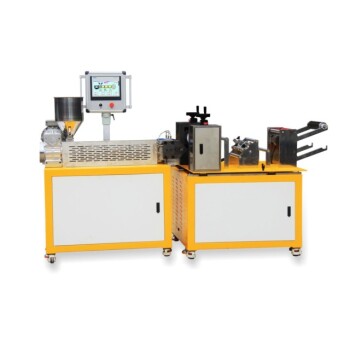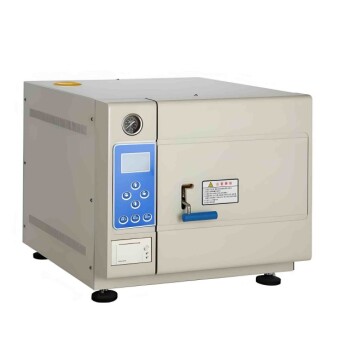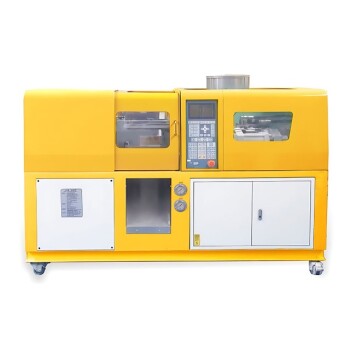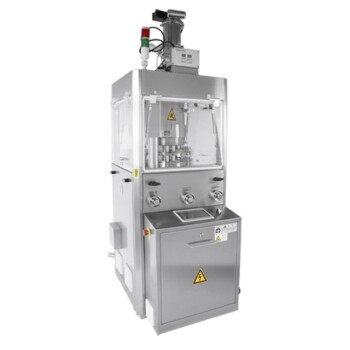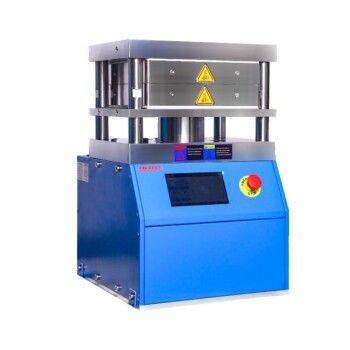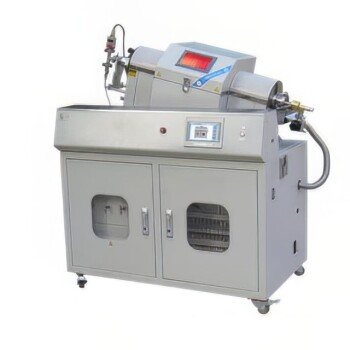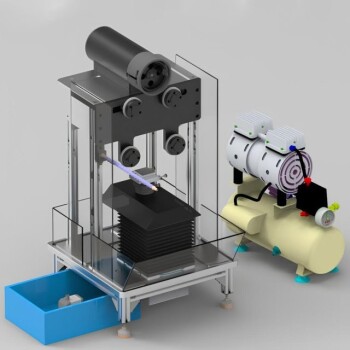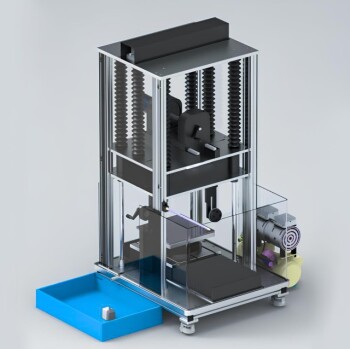مقدمة في الطحن بالتجميد
المواد الخام وعوامل العزل
تشمل المواد الخام المستخدمة عادةً في عملية السحق بالتجميد للمطاط المسحوق كتل المطاط الخام وحبيبات المطاط الخام ونفايات المطاط. ويتم اختيار هذه المواد نظرًا لقدرتها على تحمل ظروف البرودة الشديدة دون المساس بسلامتها الهيكلية. ويُعد اختيار المواد الخام أمرًا بالغ الأهمية لأنه يؤثر بشكل مباشر على جودة واتساق منتج المطاط المسحوق النهائي.
وبالإضافة إلى المواد الخام، يعد استخدام عوامل العزل أمرًا ضروريًا لمنع التكتل وضمان التشتت المنتظم للمطاط المسحوق. تشمل عوامل العزل شائعة الاستخدام ما يلي أسود الكربون السيليكوني والسيليكا. تعمل هذه العوامل كحواجز تمنع جزيئات المطاط من الالتصاق ببعضها البعض أثناء عملية الطحن. وتكتسب فعالية عوامل العزل هذه أهمية قصوى، حيث إن تطبيقها السليم يمكن أن يعزز بشكل كبير من كفاءة ومخرجات عملية السحق بالتجميد.
| عامل العزل | الوظيفة |
|---|---|
| كربون السيليكون الأسود | يمنع التكتلات ويضمن تشتت جزيئات المطاط بشكل موحد |
| السيليكا | يعمل كحاجز لمنع جزيئات المطاط من الالتصاق ببعضها البعض |
يعد اختيار واستخدام كل من المواد الخام وعوامل العزل من الخطوات الحاسمة في عملية السحق بالتجميد، مما يؤثر على الجودة والأداء العام للمطاط المسحوق المنتج.
أنواع المبردات
في عملية السحق بالتجميد للمطاط المسحوق، يلعب اختيار المبردات دورًا حاسمًا في تحديد كفاءة وجودة المنتج النهائي. والمبردان الأساسيان المستخدمان في هذه العملية هما الأمونيا السائلة وموسعات التوربينات الهوائية. وتتميز كل طريقة من هاتين الطريقتين بخصائصها وتطبيقاتها الفريدة، مما يسهم في تنوع مجموعة متنوعة من منتجات المطاط المسحوق المتاحة.
طريقة تجميد الأمونيا السائلة
تتضمن طريقة تجميد الأمونيا السائلة استخدام الأمونيا السائلة كمبرد لتجميد مادة المطاط بسرعة. وتعد هذه الطريقة فعالة بشكل خاص بسبب الموصلية الحرارية العالية للأمونيا، مما يسمح بنقل الحرارة بسرعة وتجميد فعال. وتساعد عملية التجميد السريع في الحفاظ على التركيب الجزيئي للمطاط، وبالتالي الحفاظ على خصائصه المتأصلة. وغالباً ما تكون هذه الطريقة مفضلة للتطبيقات التي يكون فيها الحفاظ على مرونة المطاط ومرونته أمراً بالغ الأهمية.
طريقة التوسيع بالتوربينات الهوائية الباردة
وعلى النقيض من ذلك، تستخدم طريقة التوربينات الهوائية الباردة لتوسيع التوربينات الهوائية تأثير جول-تومسون لتحقيق التبريد. تتضمن هذه الطريقة توسيع الهواء عالي الضغط من خلال توربين، مما يؤدي إلى انخفاض كبير في درجة الحرارة. ثم يتم استخدام الهواء البارد الناتج لتجميد المادة المطاطية. وتعتبر هذه التقنية مفيدة في البيئات الصناعية بسبب كفاءتها في استخدام الطاقة وقابليتها للتوسع. وهي مناسبة بشكل خاص للعمليات واسعة النطاق التي تتطلب تبريداً مستمراً وفعالاً.
لكلتا الطريقتين مزاياها المميزة ويتم اختيارها بناءً على المتطلبات المحددة لعملية الإنتاج، مثل حجم الجسيمات المرغوب فيه، وحجم الإنتاج، والحاجة إلى الحفاظ على خصائص معينة للمواد. وبالتالي يعد اختيار طريقة التبريد المناسبة قرارًا حاسمًا في عملية السحق بالتجميد، مما يؤثر على الكفاءة الكلية وجودة المطاط المسحوق المنتج.
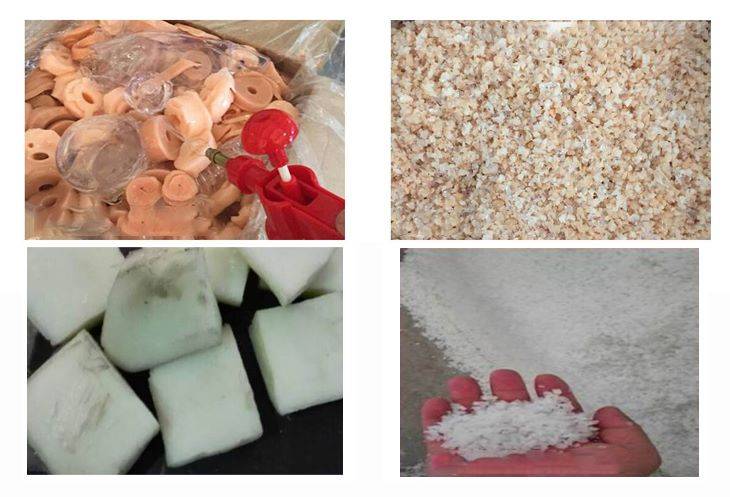
طرق السحق بالتبريد
طريقة رش النيتروجين السائل على خطوتين
تبدأ العملية بتقطيع كتلة الصمغ بدقة إلى قطع متجانسة بقياس 150 مم × 150 مم. ثم يتم تعريض هذه القطع بعد ذلك إلى رذاذ أولي من النيتروجين السائل، مما يخفض درجة حرارتها بسرعة إلى درجة حرارة فائقة البرودة -80 درجة مئوية. وعند درجة الحرارة شديدة البرودة هذه، تصبح الكتلة المطاطية هشة، مما يسمح بسحقها بشكل خشن إلى جزيئات يقل حجمها عن 2 مم.
بعد هذا التكسير الأولي، تخضع جزيئات المطاط، التي تقل الآن إلى أقل من 2 مم، لجولة ثانية من رش النيتروجين السائل. وتضمن خطوة التجميد الثانوية هذه تبريد الجسيمات بشكل موحد، مما يزيد من هشاشتها. وبعد ذلك، تخضع الجسيمات لعملية تكسير ناعمة، وهي عملية تستمر حتى يصل حجم الجسيمات إلى أكثر من 95% من الكريات إلى أقل من 150 ميكرومتر. لا يضمن هذا النهج المكون من خطوتين إنتاجية عالية من المسحوق الناعم فحسب، بل يحافظ أيضًا على سلامة وجودة المادة المطاطية طوال العملية.
طريقة التبريد العميق
في طريقة التبريد العميق، يتم غمر كتلة المطاط بأكملها في حمام نيتروجين سائل، وتتعرض للتجميد العميق السريع عند درجات حرارة منخفضة تصل إلى -160 درجة مئوية. ويتسبب هذا البرودة الشديدة في جعل المطاط هشاً، مما يمكّنه من التحطم إلى قطع أصغر. ثم يتم تغذية هذه الأجزاء المطاطية الأصغر حجماً في كسارة مطحنة مطرقية. وأثناء سحق المطاط، يتم رش النيتروجين السائل باستمرار عند درجة حرارة -80 درجة مئوية تحت الصفر للحفاظ على هشاشة المادة وتسهيل المزيد من التفتت. وتستمر هذه العملية حتى يتم تقليل جزيئات المطاط إلى حجم 150 ميكرومتر أو أقل.
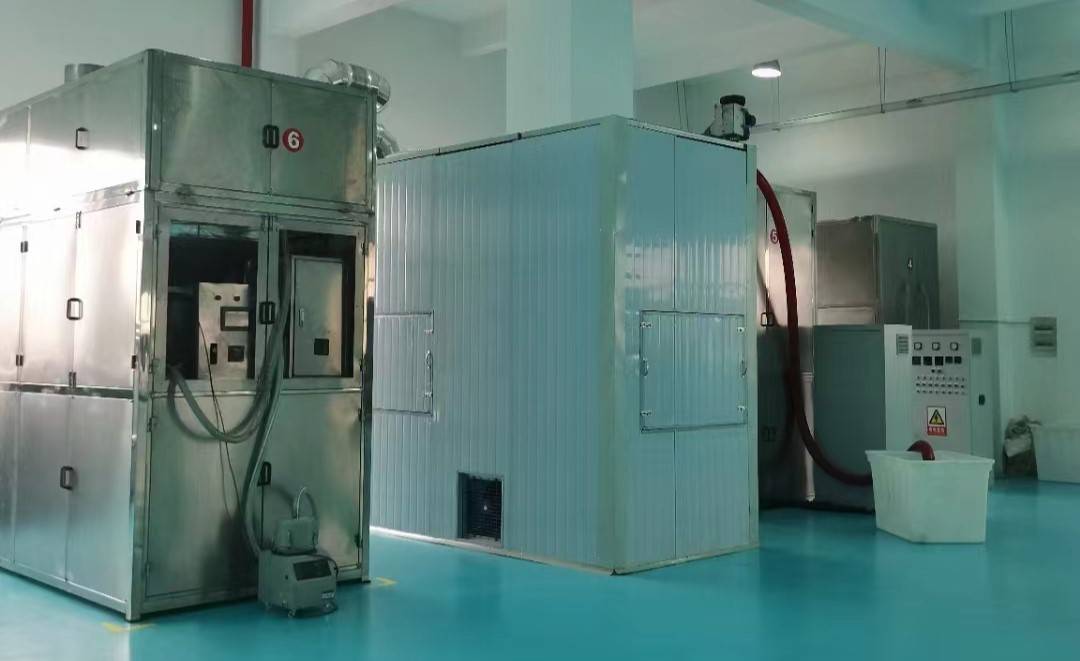
هذه الطريقة فعالة بشكل خاص للمواد التي يصعب سحقها في درجات الحرارة العادية بسبب مرونتها ومرونتها. لا يضمن استخدام النيتروجين السائل بقاء المطاط في حالة هشاشة فحسب، بل يمنع أيضًا التصاق المادة بالماكينة، وبالتالي تعزيز كفاءة عملية السحق. تُعد طريقة التبريد العميق خطوة حاسمة في إنتاج المطاط المسحوق، حيث توفر وسيلة موثوقة وفعالة لتحقيق حجم الجسيمات المطلوب لمختلف التطبيقات الصناعية.
طريقة الجمع بين درجة الحرارة العادية ودرجة الحرارة المنخفضة
يمثل الاعتماد الحصري على طريقة درجة الحرارة العادية أو طريقة درجة الحرارة المنخفضة تحديات كبيرة في إنتاج المطاط المسحوق الناعم. فغالبًا ما تقصر طريقة درجة الحرارة العادية في تحقيق الدقة المطلوبة، في حين أن طريقة درجة الحرارة المنخفضة، على الرغم من فعاليتها، تتكبد تكاليف طاقة باهظة. وبالتالي، يبرز النهج الهجين الذي يدمج كلاً من عمليات درجة حرارة الغرفة ودرجة الحرارة المنخفضة كحل عملي.
في البداية، يتم إخضاع المطاط لمرحلة تكسير أولية في درجة حرارة الغرفة، مما يقلل من المواد السائبة إلى أجزاء يمكن التحكم فيها بحجم 6 مم. تسهل هذه الخطوة المعالجة اللاحقة بالتبريد، حيث يتم تعريض المطاط المجزأ إلى نيتروجين سائل بدرجة حرارة -80 درجة مئوية تحت الصفر. ويؤدي التجميد السريع إلى تجميد جزيئات المطاط، مما يجعلها هشة وقابلة للتكسير الدقيق.
وعند الوصول إلى الهشاشة المطلوبة، يتم تعريض المطاط المجمد إما لمطحنة قرصية سنية أو مطحنة مطرقة لمرحلة التكسير النهائية. وتضمن هذه العملية الدقيقة تقليل جزيئات المطاط إلى متوسط قطر أقل من 150 ميكرومتر. وبدلاً من ذلك، يمكن إدخال الشظايا المجمدة في مطحنة مبردة، والتي تستخدم مبادئ مماثلة لتحقيق حجم الجسيمات المطلوب.
لا تعمل هذه المنهجية المدمجة على تحسين استهلاك الطاقة فحسب، بل تعزز أيضًا من دقة وتوحيد المطاط المسحوق، مما يجعلها خيارًا متفوقًا في التطبيقات الصناعية.
فوائد الطحن بالتبريد
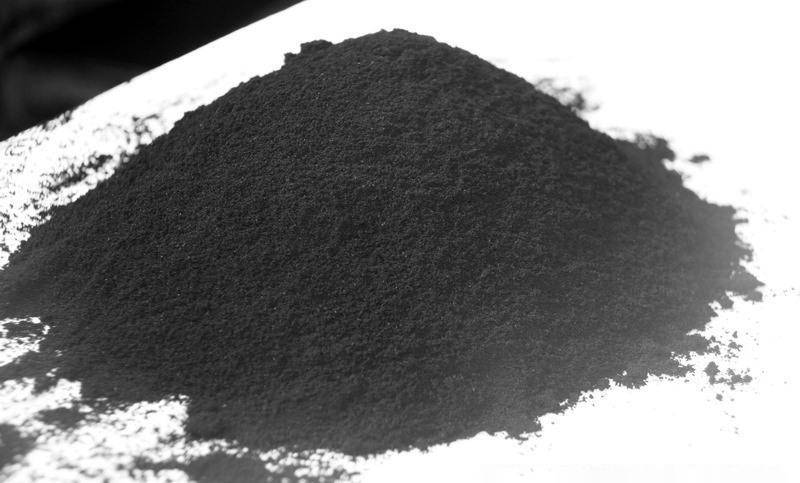
الكفاءة في الطحن
يعزز الطحن بالتبريد بشكل كبير من قدرة استرداد المواد المختلفة، لا سيما تلك المواد التي يصعب تقليديًا سحقها بالطرق التقليدية. تستفيد هذه التقنية من الوسائط فائقة البرودة لتحقيق عمليات طحن أكثر كفاءة. على سبيل المثال، يمكن طحن مواد مثل البلاستيك والمطاط، المعروفة بصلابتها ومرونتها، بفعالية من خلال تعريضها لدرجات حرارة شديدة البرودة.
تتضمن إحدى الطرق الأكثر شيوعًا تجميد هذه المواد في درجات حرارة منخفضة تصل إلى -160 درجة مئوية باستخدام النيتروجين السائل. ولا تؤدي طريقة التبريد العميق هذه إلى تصلب المواد فحسب، بل تجعلها أكثر هشاشة أيضًا، مما يسهل عملية الطحن بشكل أسهل وأكثر دقة. يمكن تقسيم العملية إلى عدة خطوات رئيسية:
- تحضير المواد: يتم أولاً تقطيع المواد الخام، مثل كتل المطاط أو الحبيبات البلاستيكية، إلى قطع يمكن التحكم فيها.
- التجميد الأولي: ثم يتم تعريض هذه القطع للنيتروجين السائل، مما يخفض درجة حرارتها بسرعة إلى -160 درجة مئوية.
- الطحن الخشن: تتعرض القطع المجمدة للطحن الخشن، مما يقلل من حجمها إلى أجزاء أصغر.
- التجميد الثانوي: يتم تعريض الشظايا الأصغر مرة أخرى للنيتروجين السائل لضمان تجميدها بشكل موحد.
- الطحن الناعم: وأخيرًا، يتم طحن هذه الشظايا المجمدة بشكل موحد إلى حجم الجسيمات المطلوب، وغالبًا ما يكون أقل من 150 ميكرومتر.
ويضمن هذا النهج المنهجي أن المواد لا يتم طحنها بكفاءة أكبر فحسب، بل أيضًا إلى حجم جسيمات متناسق وموحد، وهو أمر بالغ الأهمية لمختلف التطبيقات الصناعية.
المنتجات ذات الصلة
- مطحنة طحن بالتبريد بالنيتروجين السائل، مطحنة تبريد، طاحونة فائقة الدقة بالهواء
- آلة طحن كروية كوكبية عالية الطاقة للخزان الأفقي للمختبر
- آلة تكسير بلاستيك قوية
- آلة الضغط الأيزوستاتيكي البارد CIP لإنتاج قطع العمل الصغيرة 400 ميجا باسكال
- آلة طحن الكرات الكوكبية المصغرة للمختبر

